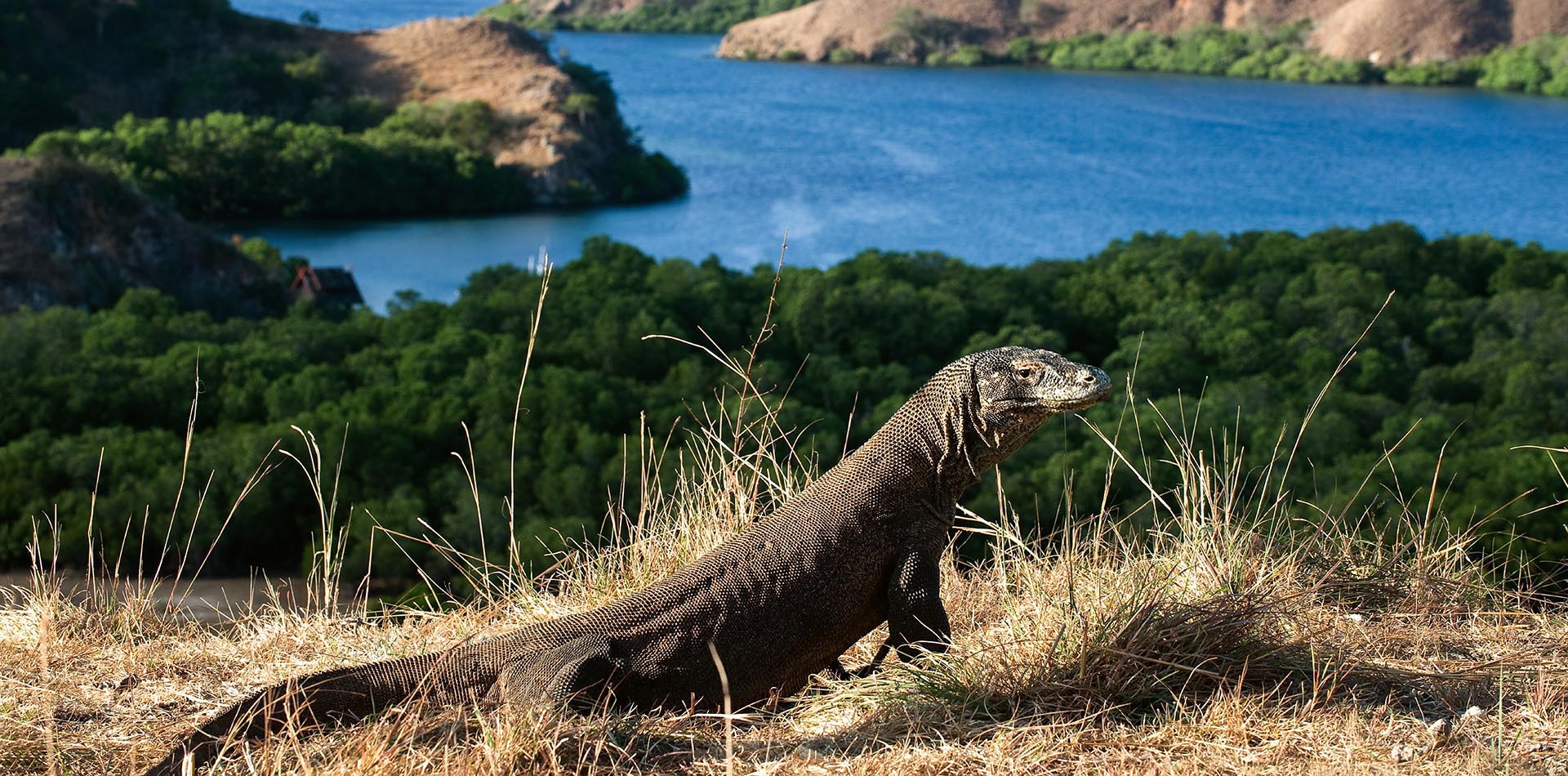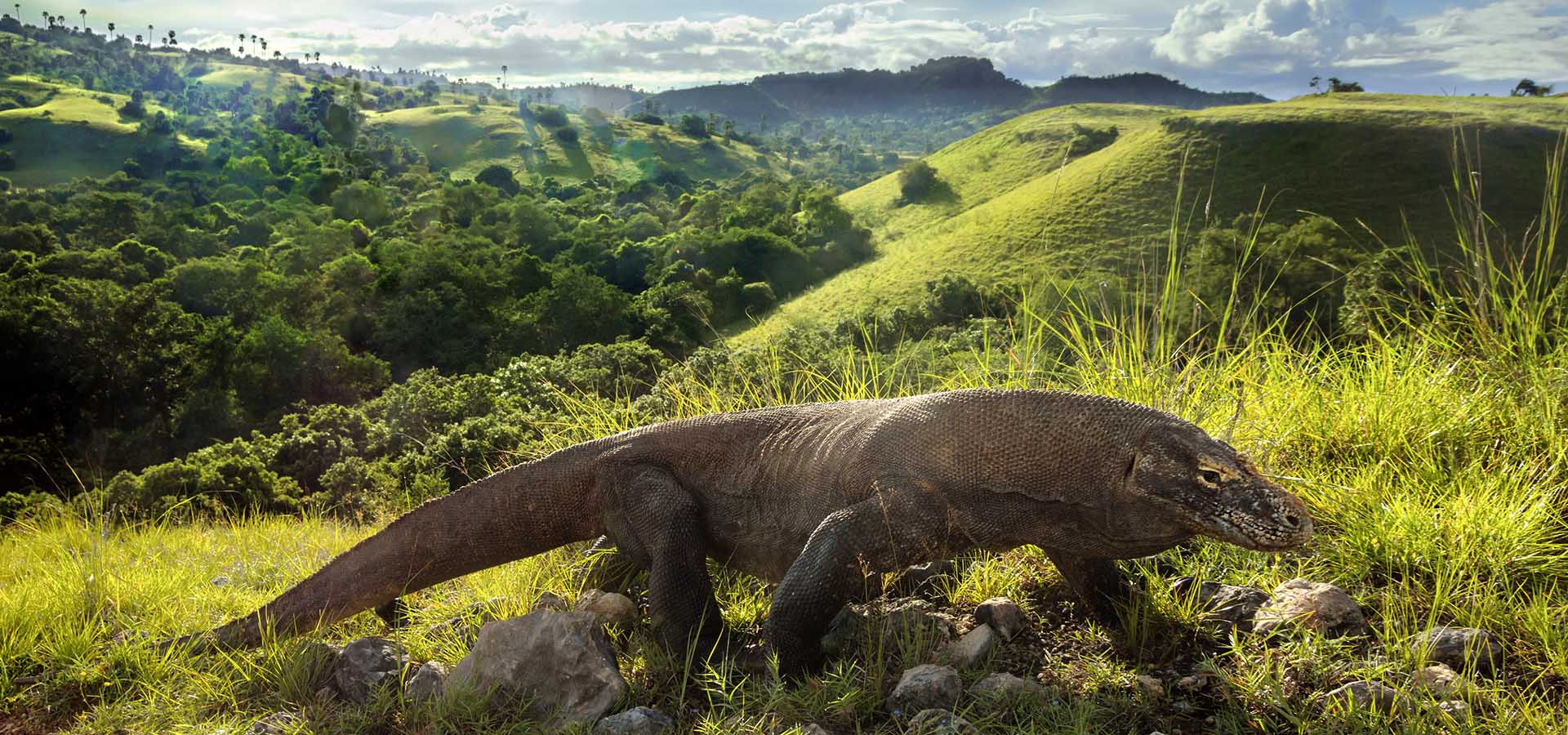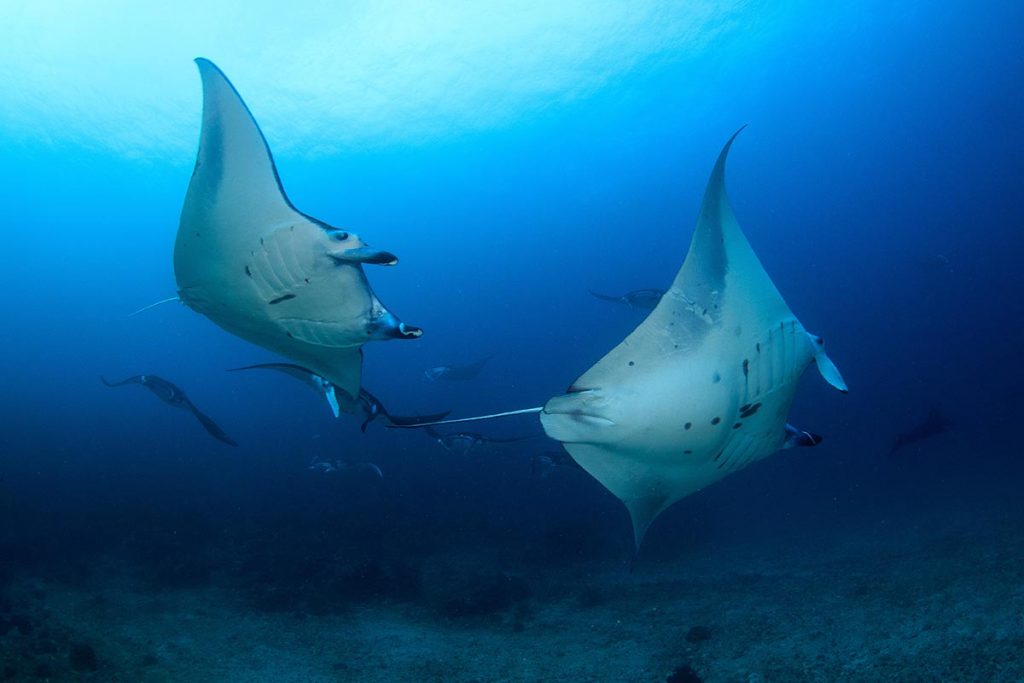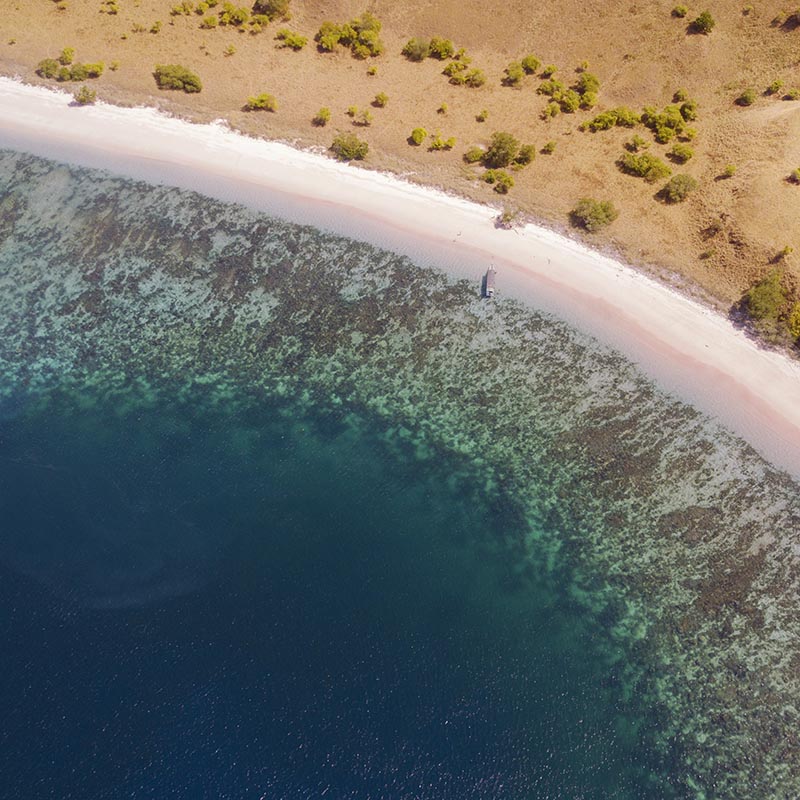Wild Facts about the Komodo Dragon
Visit the Beautiful Komodo Islands
The remote Komodo islands in Eastern Indonesia can only be described as one of the last paradises on earth. Wild and mountainous with scrubby green savannahs, chalky cliffs, white sandy beaches, shallow coral gardens and plunging turquoise ocean, these islands have to be seen to be believed.
Moreover, the Komodo Islands are ecologically recognised as being of such importance that the region was established as a National Park in 1980 and made a UNESCO World Heritage site in 1991. All the flora and fauna as well as all the wildlife, on land and at sea is protected here. This region is also famously known as the only place the Komodo dragon is found in its natural habitat.
This incredible species is the largest lizard in the world and is a member of the monitor lizard family. They can, in exceptional cases grow up to 3 metres in length and reach weights of up to 70 kilograms.
Here are some of the best-kept secrets about one of the most fascinating creatures on Earth.
1. Man-Eaters
Since 1974, Komodo dragons have killed at least 4 people although they actually prefer smaller prey or feeding on carrion. They are huge animals themselves so it’s no surprise then that they can take down wild boar, deer and water buffalo.
The Komodo dragon is uniquely adapted to its habitat and blends into the landscape adapting an ambush strategy to attack their unsuspecting prey. For a large animal, they are also exceptionally fast on their feet and deliver a venomous bite.
These attacks on people were documented in 1974, 2000, 2007, and 2009. The last one took place when a man fell from an apple tree and lay dazed on the ground. As a general rule, Komodo dragons prefer raiding graves to killing people, so the natives on the island frequently pile rocks over their loved ones’ tombs as a deterrent.
Don’t worry if you are taking a safari of Komodo Islands the park rangers who supervise the tours are highly experienced and there to keep you safe.
2. Swimmers
The Komodo dragon is highly evolved to exist in its island habitat and they are very able swimmers. Often they swim the long distances between islands in search of prey and can be spotted up to a mile from the shore.
3. Land Crocodiles
The Komodo dragon is a term coined by the western scientists. These amazing creatures were not discovered until 1910 by Lieutenant van Steyn van Hensbroek who went to Komodo Island after hearing stories about giant lizards. He killed a dragon and sent the skin and several photographs to Peter A. Ouwens, director of the Zoological Museum and Botanical Garden in Bogor, Java.
The Latin name for the creature is Varanus komodoensis and locals call them Ora which means land crocodile in the Mangarrai dialect. Weirdly Varanus is the Latinization of the Arabic word Waran which means monitor and the Egyptians believed these lizards served as monitors, alerting people to the presence of crocodiles.
4. Grave robbers
Komodo dragons love nothing more than an effort-free meal. Like many other reptiles, they have forked tongues which pick up microscopic, airborne particles. These can sense a dead body over 2 miles away. After these sensors have been exposed to the air they are retracted and inserted into the Jacobson’s organ in the roof of the mouth. This enables the reptile to identify the flavours it has picked up and set off in search of a tasty, free dinner.
5. Naga, The President of the USA’s Dragon
George Bush, while halfway through his term as president was given a male Komodo dragon called Naga by the Indonesian government. While the idea of letting this majestic lizard prowl the lawns of the White House was tempting the critter ended up at Cincinnati Zoo. Here he became a valued member of the team and fathered 32 youngsters before passing away in 2007 at the age of 24.
6. Komodo dragons are venomous
Up until about 10 years ago, scientists believed that these wily scavengers had saliva laced with deadly bacteria. However, in 2009 a biochemist called Brian Fry found that these unique creatures actually have fewer bacteria in their bite than most meat eaters.
On further investigation, he found that Ora have venom glands on their lower jaw which release a deadly infusion causing paralysis, extreme blood loss, inadequate clotting, tissue damage, and excruciating pain. The Komodo dragon’s prey really never stood a chance.
7. Poor vision
The Komodo dragon may have a keen sense of smell and the secret weapon of their forked tongue but their vision is poor. Their retinas possess only cone cells which can detect colour but are weak in dim light.
8. Poor Hearing
The Ora is not blessed in the hearing department either. They are not deaf but they rely far more on their sense of smell than their sense of hearing. They can only hear a small range of frequencies.
9. Virgin birth or parthenogenesis
Komodo dragons reproduce in the usual reptilian way with the males briefly courting the females. However, the females can also lay eggs without the male of the species fertilizing them. Amazing but true!
Despite having only a mother, the offspring are not clones because an unfertilized egg has only half the genes of the mother. The sperm is supposed to provide the other half. In parthenogenesis, the mother’s half-set of chromosomes doubles up to generate the full complement. Hence, the offspring derives all its genes from the mother, but they are not a duplicate of her genome.
Komodo Islands best diving in the world
Although the dragons are the kings of Komodo they are by no means the only reason to visit. If you are a keen diver (or even a novice snorkeller) there is a treasure trove of marine delights to discover in the rich and varied coral gardens below the waves. There are wonderful spots like Makassar Reef which is renowned for attracting giant manta rays and Pillarsteen which has four large underwater apexes covered in soft corals which attract a bevvy of colourful marine life.
Surreal sunsets and pink beaches
Asides from the diving and the dragons, this destination offers endless glories from the natural world. There are legendary pink beaches formed by the high quantity of organ pipe coral breaking off from surrounding reefs, peaceful pellucid seas and sunsets thronging with bats leaving the mangroves in the cool dusk.
A luxury liveaboard experience
The Komodo Islands are in the remote eastern end of the Indonesian archipelago and the best way to get the most out of your adventure is by staying on a liveaboard. Get up close and personal with these all these captivating creatures, dine on deserted beaches and soak up a long forgotten world. Relax in perfect comfort and escape into the wilderness.
For more information on our luxury liveaboard contact the Prana team at info@pranabyatzaro.com





